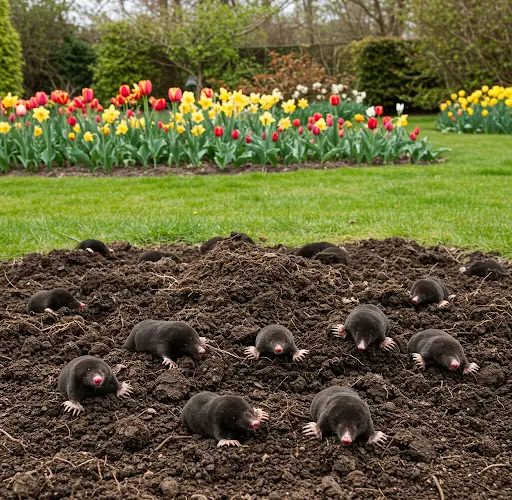How to Naturally Deter Moles from Your Garden
Moles are fascinating creatures with impressive digging abilities. In fact, a single mole can move up to 7 kilograms of soil in just half an hour. Although they are primarily carnivores and do not feed on plants, their digging activities can disrupt plant roots, damage lawns, and leave unsightly molehills throughout gardens and flower beds.
While moles do not pose a direct threat to most vegetation, their presence can still become a nuisance, especially for gardeners who take pride in the appearance and health of their outdoor spaces. Early intervention is key—it’s far easier to discourage a new mole than to remove one that has already made itself at home. Fortunately, there are several effective, chemical-free methods for deterring moles using natural ingredients and simple tools you likely already have.
Understanding Mole Behavior
Moles feed on insects, earthworms, and other soil-dwelling organisms, which actually makes them beneficial in terms of pest control. Additionally, their digging helps to aerate the soil and mix organic material such as humus, contributing to soil health.
However, moles tend to dig extensive tunnel systems, especially in the spring and fall when the soil is moist and easier to work through. These tunnels can disturb root systems, damage delicate plants, and leave behind uneven, molehill-pocked surfaces. While moles themselves are rarely seen, their work is highly visible and can become a source of frustration for gardeners.
Moles have very poor eyesight, but they compensate with an acute sense of smell and hearing. They detect movements and vibrations in the soil through a specialized organ located in their snout, known as Eimer’s organ. This sensitivity to vibrations makes them particularly responsive to certain natural deterrents.
Three Natural Methods to Repel Moles
Below are three simple, effective, and natural ways to discourage moles from settling in your garden—without using harsh chemicals or pesticides.
1. Castor Oil Solution
Castor oil is one of the most commonly recommended mole repellents, and for good reason. The smell and taste are highly unpleasant to moles, causing them to vacate the area without causing harm.
How to Prepare and Use:
-
Mix 1 liter of water with 3 tablespoons of castor oil.
-
Stir thoroughly until the oil is well combined with the water.
-
Pour the mixture directly onto molehills and into visible tunnel entrances.
The strong scent of the castor oil permeates the soil and creates an environment that moles will want to avoid. Reapply every few weeks or after heavy rainfall to maintain its effectiveness.
2. Empty Bottle Sound Trap
Another clever method involves using empty glass or plastic bottles to generate unsettling sounds that irritate moles.
Instructions:
-
Take an empty bottle and remove the cap.
-
Bury the neck of the bottle partially into the soil near a mole tunnel or hill, leaving the opening exposed.
-
The wind passing through the bottle produces a whistling or humming sound that is amplified underground.
This continuous sound irritates the mole’s sensitive hearing and often encourages it to relocate. You can also create additional noise by gently tapping the bottles periodically to enhance the effect.
3. Vibrating Iron Rods
Moles are extremely sensitive to ground vibrations. Creating regular noise through vibration can be an effective way to drive them away from specific areas.
How to Apply This Method:
-
Insert iron rods, metal stakes, or even rebar into the soil in areas affected by mole activity.
-
Regularly strike the rods with a hammer to send vibrations through the ground.
These repetitive disturbances make the area inhospitable to moles. While it may take a bit of time and persistence, this method is known to yield results.
Prevention and Ongoing Management
In addition to the above methods, there are a few additional tips that can help keep your garden mole-free:
-
Reduce soil moisture: Moles prefer moist environments because that’s where their food thrives. Avoid overwatering your garden and fix any drainage issues.
-
Control grubs and insects: Since moles feed on soil insects, reducing their food supply may encourage them to move elsewhere. Consider using natural pest control methods to limit their access to grubs and larvae.
-
Use barriers: In smaller garden areas or raised beds, physical barriers such as underground mesh or hardware cloth can help prevent mole tunneling.
A Natural, Mole-Free Garden
Moles are not inherently harmful and do play a role in maintaining healthy soil. However, when their activity starts to interfere with your garden’s health and aesthetics, taking action becomes necessary. The good news is that you don’t have to resort to toxic chemicals to manage mole problems.
Using natural repellents such as castor oil, sound traps, and vibration methods offers a safe, humane, and eco-friendly solution. With a little patience and consistency, these approaches can help you reclaim your garden and maintain a tidy, productive space for your plants to thrive.



